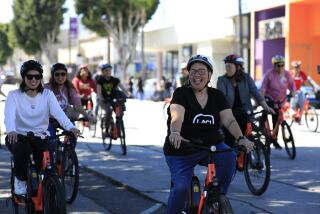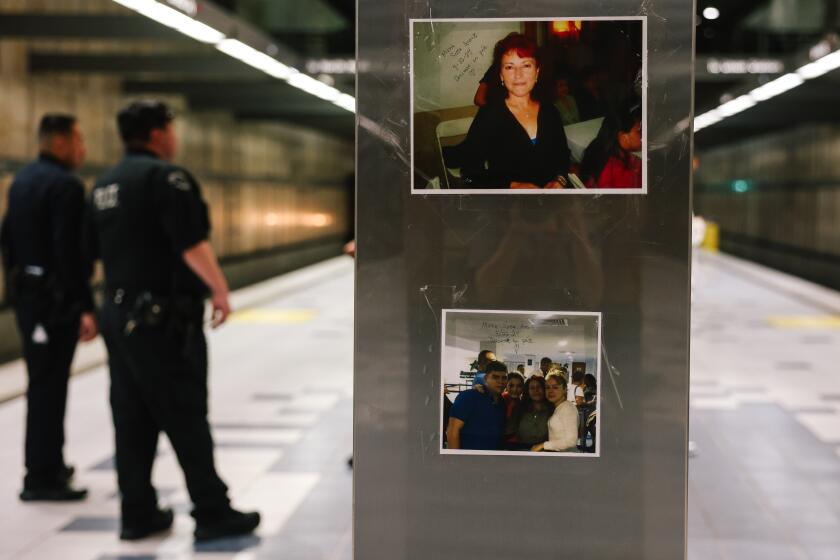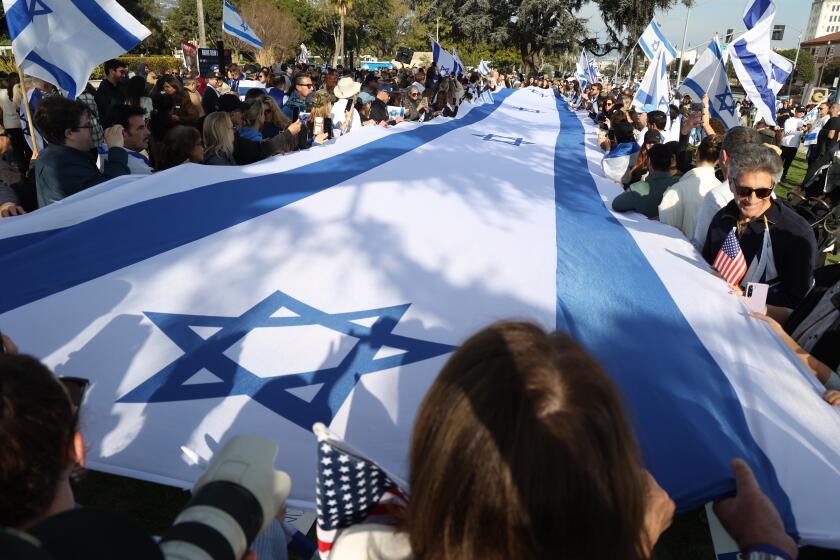Cycling Central Avenue in search of history -- and potholes
South Los Angeles is playing a leading role in the city’s movement toward healthier living and complete streets. That’s something that Tafarai Bayne of TRUST South L.A. wanted to make clear Sunday as cyclists were about to begin a ride from Watts to the north end of Central Avenue in Little Tokyo.
“My mom raised me as a vegetarian in South L.A.,” he said, “growing food in our backyard. The healthy lifestyle has existed in South L.A. for quite some time. But we haven’t always had the support we need in terms of infrastructure.”
The purpose of the ride was twofold: to highlight the portions of the avenue that are pocked with potholes or where cyclists could benefit from bike lanes, and to spotlight the storied avenue’s cultural landmarks. Those include the starting point, the Watts Labor Community Action Committee complex, and, further north, the Lincoln Theater, the Dunbar Hotel, the South L.A. Jazz Park, the site of L.A.’s own Wrigley Field, where the minor league Los Angeles Angels played, and where Major League Baseball had its Angels play during the 1961 season.
FULL COVERAGE: Sharing the road in L.A.
There were also newer sites worth noting, including the Fresh & Easy grocery store that opened several years ago and the Northgate supermarket complex currently under construction. South Los Angeles for years has been plagued by a lack of major grocery stores. But things are changing, in part because of a spirit of community activism.
As has so often proved to be the case, cyclists have had a major role in fostering that spirit. The Los Angeles County Bicycle Coalition co-sponsored Sunday’s ride along with TRUST South L.A., Community Health Councils and the Eastside Riders.
“Biking is a real unifier,” 9th District Councilman Curren Price said.
He said he expected the ride to bring some attention to the historic Central Avenue corridor.
“Other parts of the city get more attention,” Price said. “South Los Angeles always seems to be the last to be considered.”
That’s true; and now it’s in part up to Price, as a councilman, to make sure that things change.
He didn’t get on a bike for this particular ride, but the cyclists said they’d let him know where the potholes are the worst. They might point out, as well, that the bike lane in Watts disappears after 95th Street and that the street narrows considerably — and makes cycling noticeably more hazardous — north of Slauson.
Three hours after they started, riders gathered in Little Tokyo and planned their trip back, by bike, by Metro or by car.
“Part of the education piece,” said Andres Ramirez of Community Health Councils, “is making cyclists visible. It’s figuring out how we slow down the drivers and make the streets safer. There is plenty of room on other streets for commercial traffic. That’s what Alameda’s for.”
ALSO:
Garcetti seeks new treets and traffic maven
Free speech still under siege in the Ivy League
Internship abuse: The Conde Nast case, and more
This post is part of an ongoing conversation to explore how the city’s cyclists, drivers and pedestrians share and compete for road space, and to consider policy choices that keep people safe and traffic flowing. For more: latimes.com/roadshare and #roadshareLA.
More to Read
A cure for the common opinion
Get thought-provoking perspectives with our weekly newsletter.
You may occasionally receive promotional content from the Los Angeles Times.







